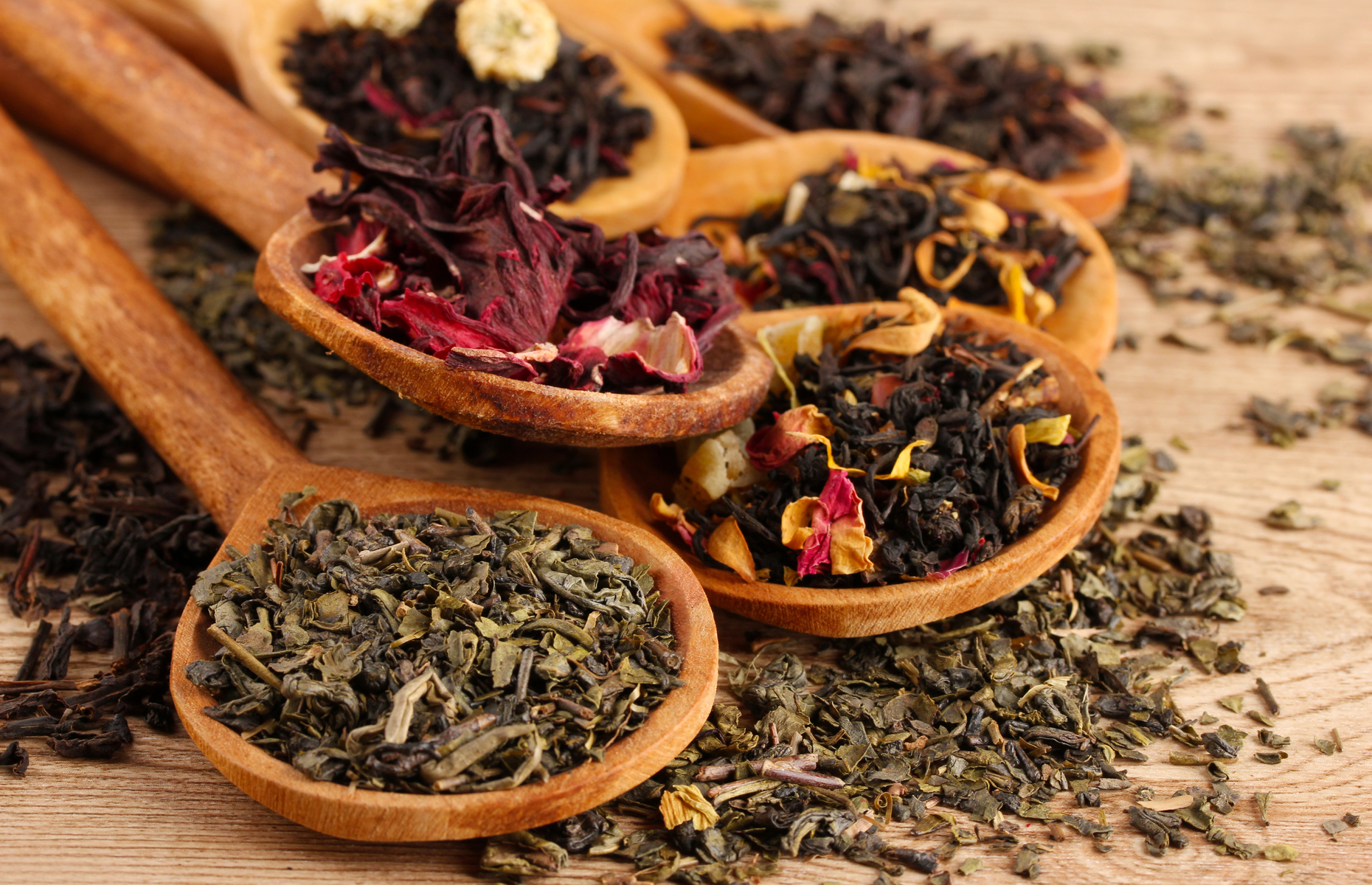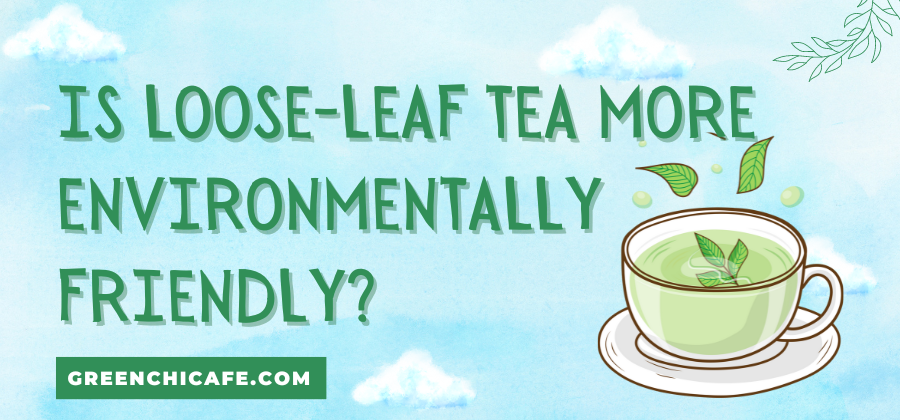Last Updated on June 3, 2024 by Annie Baldwin
Many tea drinkers wonder if loose-leaf tea is actually better for the environment than traditional tea bags.
With research showing tea bags have a much higher carbon footprint, the answer seems clear: loose leaf is the more eco-friendly choice.
Is Loose-Leaf Tea More Environmentally Friendly?

According to research, loose-leaf tea has a significantly lower carbon footprint compared to tea bags. T
ea bags have been found to have 10 times the carbon footprint of loose-leaf tea and are only 70% biodegradable.
In terms of sustainability, loose-leaf tea is the clear winner when compared to tea bags.
Loose-leaf tea helps reduce waste in landfills and is plastic-free, making it a zero-waste option. Investing in loose-leaf teas not only benefits the environment but also allows for a more luxurious tea-drinking experience.
Key Points
- Loose-leaf tea has a much smaller carbon footprint than tea bags
- Tea bags create more packaging waste and are not fully biodegradable
- Loose-leaf tea is a plastic-free, zero-waste option
Our Opinion
In our opinion, the research clearly shows that loose-leaf tea is a more sustainable and eco-friendly choice compared to tea bags.
The minimal packaging and avoidance of excess materials like polypropylene make loose-leaf tea the better option if you care about reducing waste and your carbon footprint.
The convenience of tea bags is outweighed by their negative environmental impact.
We recommend choosing loose-leaf tea whenever possible for the health of the planet.
What Is Loose-Leaf Tea?

Loose-leaf tea is made of whole tea leaves that are too large to be constrained in a tea bag. The leaves are typically placed directly in an infuser or teapot during brewing. According to research, loose-leaf tea has a significantly lower carbon footprint compared to tea bags. Tea bags have been found to have 10 times the carbon footprint of loose-leaf tea and are only 70% biodegradable. In addition to being more environmentally friendly, loose tea leaves are also more cost-effective in the long run. Although the upfront cost may be higher, loose tea leaves can usually be re-steeped multiple times, providing more value for your money.
Furthermore, loose-leaf teas offer a superior tea-drinking experience with their enhanced flavor, aroma, and higher levels of antioxidants. Unlike tea bags, which often contain small leaf bits, whole-leaf teas are considered better for both the environment and your body. They are also more enjoyable to drink. In terms of sustainability, loose-leaf tea is the clear winner when compared to tea bags. Loose-leaf tea helps reduce waste in landfills and is plastic-free, making it a zero-waste option. Investing in loose-leaf teas not only benefits the environment but also allows for a more luxurious tea-drinking experience.
When it comes to being eco-friendly, loose-leaf tea is the obvious choice over tea bags. By choosing loose leaf, you can help protect the environment, invest in a more sustainable product, and enjoy a higher quality tea-drinking experience. With its compostable nature, lack of plastic, and overall lower carbon footprint, loose-leaf tea is the more environmentally friendly option for tea lovers who want to reduce waste and drink their tea in a greener way.
Here is the continued section:
Why Loose Leaf Tea Is More Sustainable

Loose-leaf tea is a more sustainable choice compared to tea bags for several key reasons. First, loose-leaf tea typically comes packaged in compostable materials like paper, cardboard, or tin containers. This reduces plastic waste and allows the packaging to break down naturally. Tea bags, on the other hand, often contain plastic to keep the bag sealed or have non-compostable attachments like tags or strings.
In addition, loose-leaf tea consists of whole leaves that can be steeped multiple times. The same leaves can be reused to brew several pots of tea, providing more cups per leaf. Tea bags are filled with small, crushed leaf pieces that lose their flavor rapidly and cannot be re-steeped. This means more bags end up in the trash after just one use.
Finally, loose-leaf tea has a smaller carbon footprint throughout its production and transportation. The whole leaves require less processing than crushed bag tea. And loose leaf tea is often sourced and packaged in a more localized, small-batch manner compared to mass-produced bagged tea that is shipped around the world. This further reduces emissions from transportation.
For the eco-conscious tea drinker, loose leaf is the smarter choice. With compostable packaging, reusable leaves, and a smaller carbon footprint, loose-leaf tea aligns better with sustainability values and helps protect the planet one perfect cup at a time.
The Environmental Impact of Tea Bags
Tea bags may seem small and harmless, but their environmental impact is significant when you consider the sheer quantity used daily. Most tea bags contain plastic to seal the bags or attach labels and strings. This plastic ends up in landfills or waterways when bags are discarded.
In addition, most bag tea consists of small, crushed leaf pieces from lower-quality leaves. The leaves lose their flavor rapidly, preventing the tea from being re-steeped multiple times. This means more bags are used per cup of tea compared to loose leaves, exponentially increasing waste.
The material used to make the bags themselves is also problematic. Paper bags contain microplastics and aren’t compostable. Silk bags are made using wasteful processes. Even “biodegradable” bags require specific conditions to break down and may leave behind microplastics.
Lastly, the mass production and global transportation of bagged tea emits more greenhouse gases than locally sourced, minimally processed loose-leaf tea. With over 2 billion cups drunk per day worldwide, these emissions add up.
While tea bags provide convenience, their environmental impact should give the eco-conscious pause. From excess packaging and plastic to increased waste, emissions, and contamination from improper breakdown, tea bags impose costs on the environment that loose-leaf alternatives can avoid.
How to Brew Loose-Leaf Tea
Brewing loose-leaf tea may seem intimidating at first, but with a few simple tools, you can easily make a fantastic cup. The basic supplies you need are a tea kettle, a teapot or infuser, a timer, and of course, high-quality loose-leaf tea.
Start by heating filtered water in your kettle until just before boiling. The ideal temperature depends on the type of tea, but 185°F to 205°F is a safe range for most. While the water heats, measure out the tea. Use about 1 teaspoon per cup. Put the leaves into your teapot or infuser.
Once the water reaches the target temperature, pour it over the tea leaves and let them steep for 1-3 minutes. Black teas can steep a bit longer while green and white teas do best with shorter steeps. Taste the tea after a minute to judge the strength.
Finally, gently press the tea leaves to the bottom of the infuser or pot using a spoon. This prevents over-steeping. Pour the brewed tea into your cup, being careful to keep the leaves behind. Compost the leaves when you’re done steeping them.
With these simple steps and a few trial runs, you’ll be an expert loose-leaf brewer. The ritual of preparing it is relaxing, while the full, fresh flavor is a luxurious treat for your senses. Once you go loose, you may never go back to bags again.
Tips for Switching to Loose-Leaf
Making the change from tea bags to loose leaves can feel daunting. But with a few helpful tips, you can make the transition smoothly.
First, start small. Try one new loose-leaf tea each week to discover your favorites. Sample different types like black, green, oolong, and herbal blends. Take notes on the flavors you enjoy.
Invest in a few essential tools. An infuser, teapot, kettle, and measuring spoons will make loose-leaf brewing easy. Look for high-quality, sustainable materials like stainless steel. Consider a temperature-controlled kettle for perfect steeps.
Find a local tea shop and ask for recommendations based on your tastes. Specialty stores have knowledgeable staff and let you smell teas before buying. Buying loose leaf supports small businesses too.
Store teas properly in opaque, airtight containers. Light and air degrade the delicate leaves. Place them in a cool, dark cupboard to preserve freshness.
Finally, don’t give up if your first attempts aren’t perfect. Play around with amounts, water temperatures, and steeping times. It takes practice, but the reward of flavorful, unadulterated tea is worth it. Soon you’ll be a loose-leaf convert.
FAQ
Is Loose-Leaf Tea More Sustainable?
Loose-leaf tea is widely considered to be more sustainable than tea bags. Loose-leaf tea comes in minimal packaging, usually just a cardboard or paper bag. It also avoids the extra manufacturing steps and materials involved in making tea bags. This gives loose-leaf tea a much smaller carbon footprint.
Is Loose-Leaf Tea Better Than Tea Bags for the Environment?
Yes, loose-leaf tea is better for the environment compared to tea bags. Tea bags require individual packaging, paper tags, and polypropylene to seal the bags. Loose-leaf tea just requires simple paper or cardboard packaging. The minimal packaging makes loose-leaf tea much more eco-friendly.
What Tea Is Best for the Environment?
Loose-leaf tea in simple, minimal packaging is the most environmentally friendly tea option. Avoiding excess packaging, plastics, and individually wrapped tea bags reduces waste and has a lower carbon footprint.
What Are the Disadvantages of Loose-Leaf Tea?
The main disadvantages of loose-leaf tea compared to tea bags are the slight inconvenience of using infusers or strainers and the higher upfront cost. However, loose-leaf tea can be re-steeped multiple times, ultimately making it more cost-effective. The superior flavor and experience of loose-leaf tea outweigh the small disadvantages.
Conclusion
According to research, loose-leaf tea has a significantly lower carbon footprint compared to tea bags. Tea bags have been found to have 10 times the carbon footprint of loose-leaf tea and are only 70% biodegradable. In terms of sustainability, loose-leaf tea is the clear winner when compared to tea bags. Loose-leaf tea helps reduce waste in landfills and is plastic-free, making it a zero-waste option. Investing in loose-leaf teas not only benefits the environment but also allows for a more luxurious tea-drinking experience.
